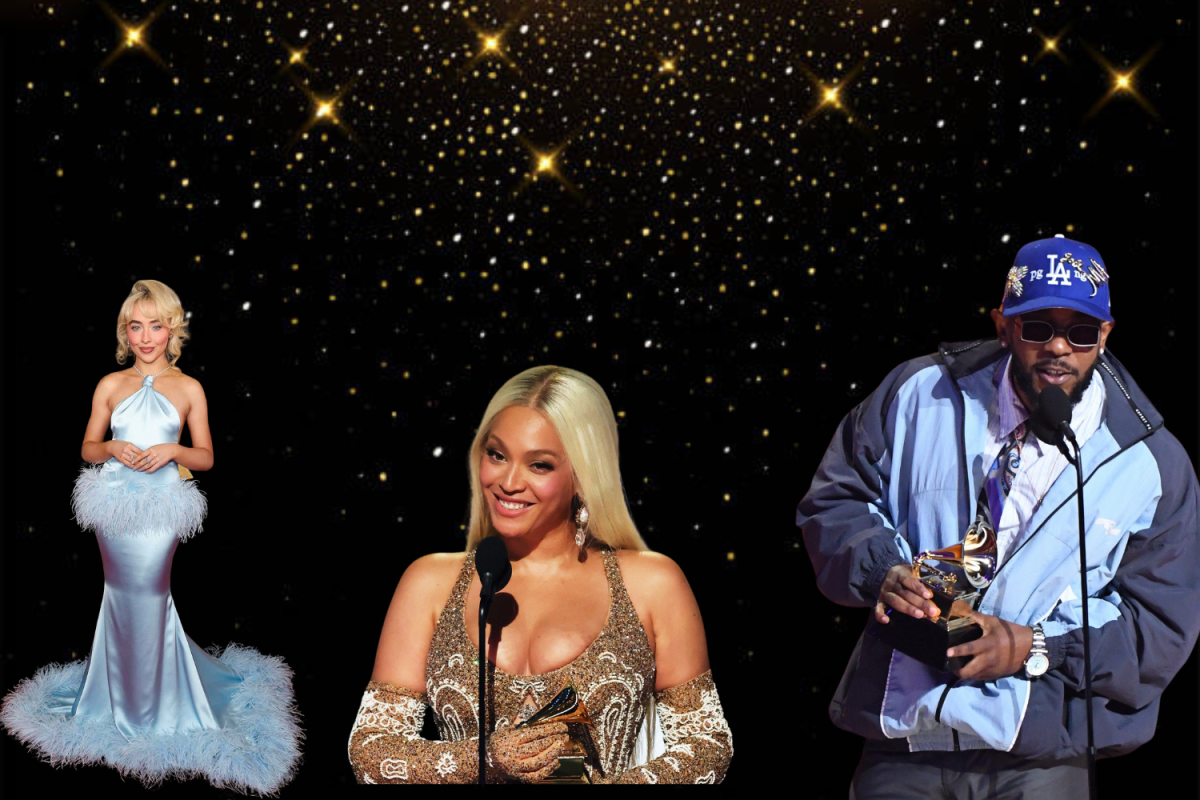Elizabeth Taylor was the last movie star. Perhaps our greatest.
She was an OK actress. But, of course, there are plenty of great actors who never become genuine stars.
Taylor’s real claim to fame was … her claim to fame. It overshadowed everything else.
Taylor, who died Wednesday at79 of congestive heart failure, was to the boomer generation the epitome of Hollywood glamour, sexual adventurousness and rampant fame.
In an era when mainstream news rarely stooped to celebrity gossip (this was long before “Entertainment Tonight,” much less TMZ), Taylor’s romantic exploits got front-page coverage.
Lindsay Lohan, Charlie Sheen, Britney Spears, the Kardashians — today’s train-wreck headliners are mere dilettantes compared to Taylor. She was the real deal — the godmother of paparazzi culture, the face that launched a thousand tabloids, the poster girl of sultriness.
And she had violet eyes to die for.
Growing up in the 1950s and ’60s it was impossible to avoid the Taylor phenomenon. It leapt at us from newspapers and magazine covers, from our TVs and radios.
This was the woman who stole singer Eddie Fisher from that nice Debbie Reynolds, then dumped him to carry on with her “Cleopatra” co-star Richard Burton. Her romantic ups and downs — eight marriages to seven men, one of which ended in tragedy — were obsessively scrutinized and commented on.
As were her health problems. Not just the pounds that came and went in later life, but also repeated life-threatening crises, more than 20 surgeries and a long addiction to pills and alcohol.
During the peak of her stardom — from 1956 to 1970 — Taylor vied with Queen Elizabeth and Marilyn Monroe (who died in ’62) for the title of the most recognized woman in the world.
Her film career helped fuel that fascination, but looking back it’s hard to name another major star who made so many forgettable movies. Of her 52 theatrical releases, only a handful are worth watching today.
Early on, the London-born Taylor could have been America’s squeaky-clean sweetheart thanks to her starring performance — she was only 12 — in “National Velvet.” That family title remains her most thoroughly enjoyable film.
She was fine as one of the teenage heroines of “Little Women” (1949) and provided suitable window dressing in “Father of the Bride” in 1950 (it was Spencer Tracy’s movie; she offered support).
Her reputation as a beauty capable of driving men mad began in 1951 with “A Place in the Sun.” She played the rich girl whom lovestruck Montgomery Clift literally dies for — and it’s fair to say that any man who watches the film feels the same way. It wasn’t that Taylor was playing a sexual femme fatale. Her character was genuinely nice . But the actress was just so damn beautiful it hurt to look at her.
She stretched her chops by chronicling one woman’s long life in “Giant” (1956) and two years later was simply sizzling as the predatory Maggie the Cat in Tennessee Williams’ “Cat on a Hot Tin Roof.” A year later she wowed audiences as a young debutante driven to madness in “Suddenly, Last Summer” (another Williams character).
Her first Oscar-winning performance came in 1960as a call girl in “BUtterfield 8,” a film so indifferent it’s rare to meet someone who’s actually seen it. Her second Academy Award was for a more enduring effort — as the blowsy, bitter, middle-aged Martha in Mike Nichols’ adaptation of Edward Albee’s “Who’s Afraid of Virginia Woolf?” (1966).
Her bad movies (it’s a formidable list) include her most famous, “Cleopatra” (1963). During production of that overblown spectacle she nearly succumbed to pneumonia and began a relationship with Richard Burton that would create a scandal unequaled until the Bill Clinton/Monica Lewinsky affair more than 30 years later.
With the exception of “The Taming of the Shrew” (’67) Taylor’s post-“Virginia Woolf” films are borderline unwatchable and her performances perfunctory. In nine of them she starred with Burton, milking their shared notoriety.
In her later career she seems to have chosen projects not for their quality but for the paycheck.
What’s curious about all this is that Taylor’s most lasting relationships were apparently asexual. Among her closest confidants were Rock Hudson, Clift and Michael Jackson. None of her eight marriages, of course, lasted, though friends describe her husband Michael Todd, the film producer who died in a 1958 plane crash, as the love of her life.
Another curiosity: Taylor seems never to have consciously cultivated fame, at least not with the determination of today’s celebrity wannabes.
Under the old studio system our adoration of actors was massaged by an army of publicists who labored to get career-advancing information into the papers and to keep the negative stuff out.
Taylor’s red-hot celebrity rendered this system moot. The public’s desperate need for images and information about her spawned an industry of celebrity muckraking that endures to this day.
But while she may have been the object of the mania, Taylor seemed reluctant to court it. Later on, when she was no longer a force in Hollywood, Taylor used her lingering celebrity to keep the money flowing in. She wrote a couple of books and took roles on television and lent her name to perfumes and other classy products.
Perhaps her post-movie life was best defined by her devotion to gay rights and particularly the fight against AIDS, which she embraced after Hudson’s 1985 death from the disease. At a time when much of Hollywood was cautious and circumspect on the subject, Taylor spoke out.
For that she received a special Oscar, the Jean Hersholt Humanitarian Award, in 1993.
Elizabeth Taylor was both the beneficiary of our obsession and a victim of it. Who’s to say if in the end it all evened out?
———
(c) 2011, The Kansas City Star.
Visit The Star Web edition on the World Wide Web at http://www.kansascity.com.
Distributed by McClatchy-Tribune Information Services.
—————
US NEWS TAYLOR-OBIT
GRAPHICS (from MCT Graphics, 202-383-6064): 20110323 Liz TAYLOR films
20110323 TAYLOR loves
Elizabeth Taylor was the last movie star. Perhaps our greatest.
She was an OK actress. But, of course, there are plenty of great actors who never become genuine stars.
Taylor’s real claim to fame was … her claim to fame. It overshadowed everything else.
Taylor, who died Wednesday at79 of congestive heart failure, was to the boomer generation the epitome of Hollywood glamour, sexual adventurousness and rampant fame.
In an era when mainstream news rarely stooped to celebrity gossip (this was long before “Entertainment Tonight,” much less TMZ), Taylor’s romantic exploits got front-page coverage.
Lindsay Lohan, Charlie Sheen, Britney Spears, the Kardashians — today’s train-wreck headliners are mere dilettantes compared to Taylor. She was the real deal — the godmother of paparazzi culture, the face that launched a thousand tabloids, the poster girl of sultriness.
And she had violet eyes to die for.
Growing up in the 1950s and ’60s it was impossible to avoid the Taylor phenomenon. It leapt at us from newspapers and magazine covers, from our TVs and radios.
This was the woman who stole singer Eddie Fisher from that nice Debbie Reynolds, then dumped him to carry on with her “Cleopatra” co-star Richard Burton. Her romantic ups and downs — eight marriages to seven men, one of which ended in tragedy — were obsessively scrutinized and commented on.
As were her health problems. Not just the pounds that came and went in later life, but also repeated life-threatening crises, more than 20 surgeries and a long addiction to pills and alcohol.
During the peak of her stardom — from 1956 to 1970 — Taylor vied with Queen Elizabeth and Marilyn Monroe (who died in ’62) for the title of the most recognized woman in the world.
Her film career helped fuel that fascination, but looking back it’s hard to name another major star who made so many forgettable movies. Of her 52 theatrical releases, only a handful are worth watching today.
Early on, the London-born Taylor could have been America’s squeaky-clean sweetheart thanks to her starring performance — she was only 12 — in “National Velvet.” That family title remains her most thoroughly enjoyable film.
She was fine as one of the teenage heroines of “Little Women” (1949) and provided suitable window dressing in “Father of the Bride” in 1950 (it was Spencer Tracy’s movie; she offered support).
Her reputation as a beauty capable of driving men mad began in 1951 with “A Place in the Sun.” She played the rich girl whom lovestruck Montgomery Clift literally dies for — and it’s fair to say that any man who watches the film feels the same way. It wasn’t that Taylor was playing a sexual femme fatale. Her character was genuinely nice . But the actress was just so damn beautiful it hurt to look at her.
She stretched her chops by chronicling one woman’s long life in “Giant” (1956) and two years later was simply sizzling as the predatory Maggie the Cat in Tennessee Williams’ “Cat on a Hot Tin Roof.” A year later she wowed audiences as a young debutante driven to madness in “Suddenly, Last Summer” (another Williams character).
Her first Oscar-winning performance came in 1960as a call girl in “BUtterfield 8,” a film so indifferent it’s rare to meet someone who’s actually seen it. Her second Academy Award was for a more enduring effort — as the blowsy, bitter, middle-aged Martha in Mike Nichols’ adaptation of Edward Albee’s “Who’s Afraid of Virginia Woolf?” (1966).
Her bad movies (it’s a formidable list) include her most famous, “Cleopatra” (1963). During production of that overblown spectacle she nearly succumbed to pneumonia and began a relationship with Richard Burton that would create a scandal unequaled until the Bill Clinton/Monica Lewinsky affair more than 30 years later.
With the exception of “The Taming of the Shrew” (’67) Taylor’s post-“Virginia Woolf” films are borderline unwatchable and her performances perfunctory. In nine of them she starred with Burton, milking their shared notoriety.
In her later career she seems to have chosen projects not for their quality but for the paycheck.
What’s curious about all this is that Taylor’s most lasting relationships were apparently asexual. Among her closest confidants were Rock Hudson, Clift and Michael Jackson. None of her eight marriages, of course, lasted, though friends describe her husband Michael Todd, the film producer who died in a 1958 plane crash, as the love of her life.
Another curiosity: Taylor seems never to have consciously cultivated fame, at least not with the determination of today’s celebrity wannabes.
Under the old studio system our adoration of actors was massaged by an army of publicists who labored to get career-advancing information into the papers and to keep the negative stuff out.
Taylor’s red-hot celebrity rendered this system moot. The public’s desperate need for images and information about her spawned an industry of celebrity muckraking that endures to this day.
But while she may have been the object of the mania, Taylor seemed reluctant to court it. Later on, when she was no longer a force in Hollywood, Taylor used her lingering celebrity to keep the money flowing in. She wrote a couple of books and took roles on television and lent her name to perfumes and other classy products.
Perhaps her post-movie life was best defined by her devotion to gay rights and particularly the fight against AIDS, which she embraced after Hudson’s 1985 death from the disease. At a time when much of Hollywood was cautious and circumspect on the subject, Taylor spoke out.
For that she received a special Oscar, the Jean Hersholt Humanitarian Award, in 1993.
Elizabeth Taylor was both the beneficiary of our obsession and a victim of it. Who’s to say if in the end it all evened out?
———
(c) 2011, The Kansas City Star.
Visit The Star Web edition on the World Wide Web at http://www.kansascity.com.
Distributed by McClatchy-Tribune Information Services.
—————
US NEWS TAYLOR-OBIT
GRAPHICS (from MCT Graphics, 202-383-6064): 20110323 Liz TAYLOR films
20110323 TAYLOR loves









